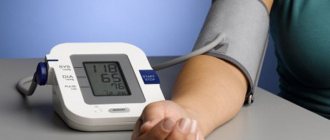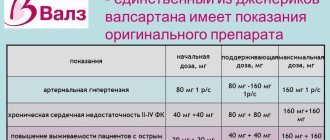Atorvastatin Novostat
ATX code: C10AA05 (Atorvastatin) Active substance: atorvastatin (atorvastatin) Rec.INN registered by WHO Dosage form NOVOSTAT caps. 20 mg: 10, 20, 30, 40, 50, 60, 80, 90, 100, 120, 150, 180, 200, 270 or 300 pcs. reg. No.: LP-002678 from 10/24/14 - Valid Release form, composition and packaging Hard gelatin capsules, No. 2, body and cap yellow with a light beige tint, opaque.
1 tab. atorvastatin calcium trihydrate 21.69 mg, which corresponds to the content of atorvastatin 20 mg
Excipients: lactose monohydrate - 87.41 mg, microcrystalline cellulose - 30 mg, sodium lauryl sulfate - 1 mg, povidone K17 - 5 mg, calcium carbonate - 35 mg, sodium carboxymethyl starch - 8 mg, magnesium stearate - 1.9 mg.
Composition of the capsule body: yellow iron oxide dye - 0.1%, titanium dioxide - 2%, gelatin - up to 100%. Composition of the capsule cap: yellow iron oxide dye - 0.1%, titanium dioxide - 2%, gelatin - up to 100%.
10 pieces. — cellular contour packages (1) — cardboard packs. 10 pieces. — contour cell packaging (2) — cardboard packs. 10 pieces. — cellular contour packages (3) — cardboard packs. 10 pieces. — contour cell packaging (4) — cardboard packs. 10 pieces. — contour cell packaging (5) — cardboard packs. 10 pieces. — contour cell packaging (6) — cardboard packs. 10 pieces. — contour cell packaging (9) — cardboard packs. 10 pieces. — contour cell packaging (10) — cardboard packs. 20 pcs. — cellular contour packages (1) — cardboard packs. 20 pcs. — contour cell packaging (2) — cardboard packs. 20 pcs. — cellular contour packages (3) — cardboard packs. 20 pcs. — contour cell packaging (4) — cardboard packs. 20 pcs. — contour cell packaging (5) — cardboard packs. 20 pcs. — contour cell packaging (6) — cardboard packs. 20 pcs. — contour cell packaging (9) — cardboard packs. 20 pcs. — contour cell packaging (10) — cardboard packs. 30 pcs. — cellular contour packages (1) — cardboard packs. 30 pcs. — contour cell packaging (2) — cardboard packs. 30 pcs. — cellular contour packages (3) — cardboard packs. 30 pcs. — contour cell packaging (4) — cardboard packs. 30 pcs. — contour cell packaging (5) — cardboard packs. 30 pcs. — contour cell packaging (6) — cardboard packs. 30 pcs. — contour cell packaging (9) — cardboard packs. 30 pcs. — contour cell packaging (10) — cardboard packs. 10 pieces. — polymer jars (1) — cardboard packs. 20 pcs. — polymer jars (1) — cardboard packs. 30 pcs. — polymer jars (1) — cardboard packs. 40 pcs. — polymer jars (1) — cardboard packs. 50 pcs. — polymer jars (1) — cardboard packs. 60 pcs. — polymer jars (1) — cardboard packs. 100 pieces. — polymer jars (1) — cardboard packs.
Clinical and pharmacological group: Lipid-lowering drug Pharmaco-therapeutic group: Lipid-lowering drug - HMG-CoA reductase inhibitor
Indications Primary hypercholesterolemia with ineffective diet therapy, combined hypercholesterolemia and hypertriglyceridemia, heterozygous and homozygous familial hypercholesterolemia with ineffective diet therapy. ICD-10 codes ICD-10 code Indication E78.0 Pure hypercholesterolemia E78.1 Pure hyperglyceridemia E78.2 Mixed hyperlipidemia
Dosage regimen Treatment is carried out against the background of a standard diet for patients with hypercholesterolemia. The dose is set individually, depending on the initial cholesterol level. Taken orally. The initial dose is usually 10 mg 1 time / day. The effect appears within 2 weeks, and the maximum effect occurs within 4 weeks. If necessary, the dose can be gradually increased at intervals of 4 weeks or more. The maximum daily dose is 80 mg. Side effects From the nervous system: > 1% - insomnia, dizziness, From the sensory organs: From the cardiovascular system: > 1% - chest pain, From the hematopoietic system: From the respiratory system: > 1% - bronchitis , rhinitis, From the digestive system: > 1% - nausea, From the musculoskeletal system: > 1% - arthritis, From the genitourinary system: > 1% - urogenital infections, peripheral edema, Dermatological reactions: > 1% - alopecia , xeroderma, photosensitivity, increased sweating, eczema, seborrhea, ecchymosis, petechiae.
From the endocrine system: From the metabolic side: Allergic reactions: Laboratory indicators: Contraindications for use Liver diseases in the active stage, increased activity of serum transaminases by more than 3 times of unknown origin, pregnancy, lactation (breastfeeding), women of reproductive age, not using reliable contraception, increased sensitivity to atorvastatin. Use during pregnancy and breastfeeding Atorvastatin is contraindicated for use during pregnancy and lactation (breastfeeding).
It is not known whether atorvastatin is excreted in breast milk. Considering the possibility of adverse events in infants, if it is necessary to use the drug during lactation, the issue of stopping breastfeeding should be decided.
Women of reproductive age should use adequate contraception during treatment. Atorvastatin should only be used in women of reproductive age if the likelihood of pregnancy is very low and the patient is informed of the possible risk of treatment to the fetus.
Use for liver dysfunction Contraindication: liver disease in the active stage.
Liver function tests should be monitored before and during treatment with atorvastatin, especially if symptoms of liver damage occur. If the level of transaminases increases, their activity should be monitored until normalization. If AST or ALT activity, more than 3 times higher than normal, persists, a dose reduction or discontinuation of atorvastatin is recommended.
Use in children In children, experience with the use of atorvastatin at doses up to 80 mg/day is limited. Special instructions Before and during treatment with atorvastatin, especially when symptoms of liver damage appear, liver function tests should be monitored. If the level of transaminases increases, their activity should be monitored until normalization. If AST or ALT activity, more than 3 times higher than normal, persists, a dose reduction or discontinuation of atorvastatin is recommended.
If symptoms of myopathy appear during treatment, CPK activity should be determined. If a significant increase in CPK levels persists, it is recommended to reduce the dose or discontinue atorvastatin.
The risk of myopathy during treatment with atorvastatin increases with concomitant use of cyclosporine, fibrates, erythromycin, azole antifungals, and niacin.
There is a possibility of developing the following adverse reactions, but not in all cases a clear connection has been established with taking atorvastatin: muscle cramps, myositis, myopathy, paresthesia, peripheral neuropathy, pancreatitis, hepatitis, cholestatic jaundice, anorexia, vomiting, alopecia, itching, rash, impotence, hyperglycemia and hypoglycemia.
In children, experience with the use of atorvastatin at doses up to 80 mg/day is limited.
Atorvastatin should be used with caution in patients with chronic alcoholism.
Drug interactions When atorvastatin is used simultaneously with digoxin, the concentration of digoxin in the blood plasma slightly increases.
Diltiazem, verapamil, isradipine inhibit the CYP3A4 isoenzyme, which is involved in the metabolism of atorvastatin, therefore, when used simultaneously with these calcium channel blockers, it is possible to increase the concentration of atorvastatin in the blood plasma and increase the risk of developing myopathy.
With simultaneous use of itraconazole, the concentration of atorvastatin in the blood plasma increases significantly, apparently due to the inhibition of its metabolism in the liver by itraconazole, which occurs with the participation of the CYP3A4 isoenzyme, increasing the risk of developing myopathy.
With simultaneous use of colestipol, it is possible to reduce the concentration of atorvastatin in the blood plasma, while the lipid-lowering effect is enhanced.
When used concomitantly, antacids containing magnesium hydroxide and aluminum hydroxide reduce the concentration of atorvastatin by approximately 35%.
With the simultaneous use of cyclosporine, fibrates (including gemfibrozil), antifungal drugs of azole derivatives, nicotinic acid, the risk of developing myopathy increases.
With simultaneous use of erythromycin and clarithromycin, the plasma concentration of atorvastatin moderately increases and the risk of developing myopathy increases.
With the simultaneous use of ethinyl estradiol and norethisterone (norethindrone), the concentration of ethinyl estradiol, norethisterone and (norethindrone) in the blood plasma increases slightly.
With simultaneous use of protease inhibitors, the concentration of atorvastatin in the blood plasma increases, because Protease inhibitors are inhibitors of the CYP3A4 isoenzyme.
Novostat capsules 10 mg, 2 packs of 30 pcs.
In controlled clinical trials (n=2502), less than 2% of patients discontinued treatment due to side effects caused by atorvastatin. The most common adverse effects associated with atorvastatin were constipation, flatulence, dyspepsia and abdominal pain.
From the nervous system and sensory organs:
≥2% - headache, asthenic syndrome, insomnia, dizziness; <2% - malaise, drowsiness, nightmares, amnesia, paresthesia, peripheral neuropathy, emotional lability, impaired coordination of movements, facial paralysis, hyperkinesis, depression, hyperesthesia, amblyopia, dry conjunctiva, impaired ocular accommodation, hemorrhage in the eye, glaucoma, tinnitus, deafness, parosmia, loss of taste, perversion of taste.
From the cardiovascular system:
≥2% - chest pain; <2% - palpitations, vasodilation, fainting, migraine, postural hypotension, increased blood pressure, phlebitis, arrhythmia, angina pectoris, anemia, lymphadenopathy, thrombocytopenia.
From the respiratory system:
≥2% - sinusitis, pharyngitis, bronchitis, rhinitis; <2% - pneumonia, dyspnea, bronchial asthma, nosebleeds.
From the gastrointestinal tract:
≥2% - abdominal pain, constipation or diarrhea, dyspepsia, flatulence, nausea; <2% - anorexia or increased appetite, dry mouth, belching, dysphagia, vomiting, stomatitis, esophagitis, erosive and ulcerative lesions of the oral mucosa, gastroenteritis, gastritis, enteritis, colitis, cheilitis, duodenal ulcer, gastric ulcer, pancreatitis , biliary colic, cholestatic jaundice, liver dysfunction, hepatitis, rectal bleeding, melena, bleeding gums, tenesmus.
From the musculoskeletal system:
≥2% - arthralgia, myalgia, arthritis; <2% - neck muscle stiffness, leg muscle cramps, bursitis, tenosynovitis, myasthenia gravis, myositis, torticollis, muscle hypertonicity, joint contractures.
From the genitourinary system:
≥2% - urogenital infections, peripheral edema; <2% - hematuria, albuminuria, increased urination, cystitis, dysuria, nocturia, nephrolithiasis, urinary incontinence or urinary retention, urinary urgency, nephritis, vaginal bleeding, uterine bleeding, metrorrhagia, epididymitis, decreased libido, impotence, ejaculation disorder.
From the skin:
<2% - alopecia, xeroderma, increased sweating, acne, eczema, seborrhea, skin ulcers, ecchymoses, petechiae.
Allergic reactions:
≥2% - skin rash; <2% - facial edema, generalized edema, itching, contact dermatitis, urticaria.
Other:
≥2% - infections, accidental trauma, influenza-like syndrome, back pain; <2% - increased body temperature, photosensitivity, increased body weight, enlarged mammary glands, hyperglycemia, hypoglycemia, increased serum creatine phosphokinase, alkaline phosphatase, increased ALT or AST, exacerbation of gout.
Side effects noted in post-marketing studies with atorvastatin therapy: anaphylaxis, angioedema, bullous rash (including erythema multiforme, Stevens-Johnson syndrome, toxic epidermal necrolysis), rhabdomyolysis, tendon rupture.
Description of the drug ROSUVASTATIN
Use with caution in the presence of risk factors for the development of rhabdomyolysis (including renal failure, hypothyroidism, personal or family history of hereditary muscle diseases and a previous history of muscle toxicity when using other HMG-CoA reductase inhibitors or fibrates), in chronic alcoholism, in older patients 65 years old, with a history of liver disease, sepsis, arterial hypotension, during major surgery, trauma, severe metabolic endocrine or electrolyte disturbances, with uncontrolled epilepsy, in people of Asian origin (Chinese, Japanese).
Therapy should be discontinued if CPK levels are significantly increased (more than 5 times the ULN) or if muscle symptoms are severe and cause daily discomfort (even if the CPK level is 5 times less than the ULN).
When using rosuvastatin at a dose of 40 mg, it is recommended to monitor renal function indicators.
In most cases, proteinuria decreases or disappears during therapy and does not indicate the onset of acute or progression of existing kidney disease.
An increased incidence of myositis and myopathy has been reported in patients taking other HMG-CoA reductase inhibitors in combination with fibric acid derivatives (including gemfibrozil), cyclosporine, niacin, azole antifungals, protease inhibitors and macrolide antibiotics. Gemfibrozil increases the risk of myopathy when combined with certain HMG-CoA reductase inhibitors. Therefore, co-administration of rosuvastatin and gemfibrozil is not recommended. The balance of risk and possible benefit should be carefully weighed when using rosuvastatin and fibrates or niacin together.
It is recommended to determine liver function indicators before starting therapy and 3 months after starting therapy. The use of rosuvastatin should be discontinued or the dose reduced if the level of transaminase activity in the serum is 3 times higher than the ULN.
In patients with hypercholesterolemia due to hypothyroidism or nephrotic syndrome, treatment of underlying diseases should be carried out before starting treatment with rosuvastatin.
Impact on the ability to drive vehicles and operate machinery
When engaging in potentially hazardous activities, patients should be aware that dizziness may occur during therapy.
Sad lessons from competitors
There are already a couple of PCSK9 inhibitors on the market - Praluent (alirocumab) and Repatha (evolocumab), used to reduce the risks of complications of cardiovascular diseases and lower LDL cholesterol in primary hyperlipidemias, including familial hypercholesterolemia.
These monoclonal antibodies from Sanofi/Regeneron Pharmaceuticals and Amgen, which debuted in the summer of 2015, are given on top of statins (by subcutaneous injection) every two weeks or month and provide pretty good control. bad" cholesterol. And if inclisiran directly blocks the synthesis of PCSK9, then alirocumab and evolocumab block circulating PCSK9.
These drugs have not gained much popularity. The cost of Praluent and Repata is too high to divert the attention of patients, doctors and insurance companies from cheap statins, which are all represented by cheap generic copies. Manufacturers even had to do something unprecedented for the United States, significantly reducing prices (from 14 thousand to 5.85 thousand dollars per year), but this did not help either.
Novartis' marketing strategy for Lequio is unclear. But it is already clear that greed will have an extremely negative impact on the fate of the new product. By the way, the cost of producing inclisiran is comparable to that for the production of traditional low-molecular compounds, and the drug itself can be stored under normal conditions without requiring an expensive cold chain.
According to estimates by the US Institute of Clinical and Economic Research (ICER), the cost of an annual course of Lequio for American citizens should not exceed $5,481 for patients with atherosclerosis.
Inclisiran is projected to become a near-best seller by 2024, reaching $930 million in sales, according to EvaluatePharma. And in 2026, the demand for it will be equal to that for Repata, exceeding $2 billion.




